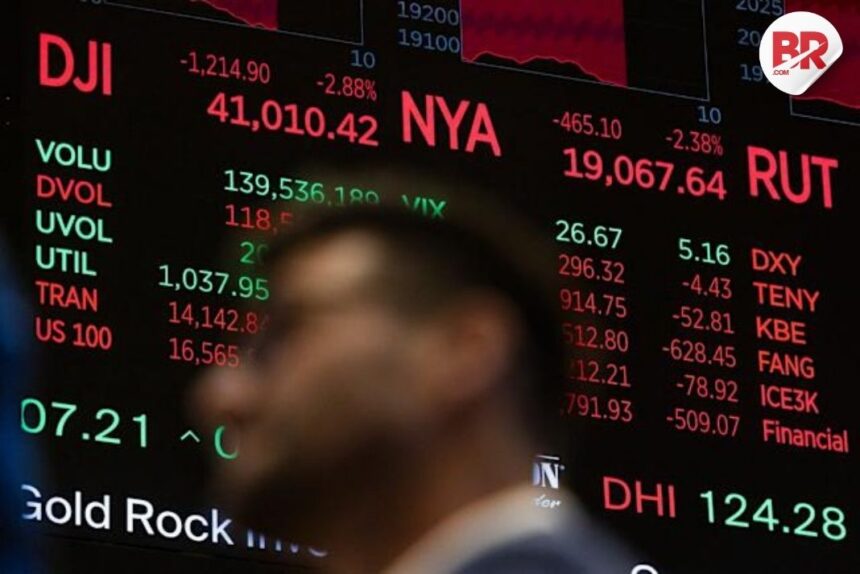
As U.S. President Donald Trump doubled down on his aggressive tariff strategy, global markets felt the full force of the fallout. Stocks plunged. Investors panicked. Trillions of dollars were wiped off the board. The world is now asking: Are we heading toward a full-blown recession?
Let’s break down what happened, what it means, and why the world is on edge.

A Tariff ‘Wrecking Ball’ Hits the Markets
On Monday, Trump intensified his tariff threats, targeting China once again. His message was loud and clear: the tariffs are here to stay—and may increase.
Almost instantly, financial markets responded with fear. Stocks across Asia nosedived. Wall Street struggled to keep afloat. The uncertainty around trade, already high, was pushed into overdrive.
This wasn’t just a routine market dip. It was chaos.
Global Market Panic: A Snapshot
The numbers paint a dramatic picture:
-
Hong Kong’s Hang Seng fell by 13.3%, its worst day since the 1997 Asian financial crisis.
-
Japan’s Nikkei 225 plunged 7.8%, falling 20% in just two weeks.
-
Taiwan’s stock market dropped 10%—the biggest one-day fall ever recorded.
-
MSCI Asia ex-Japan index collapsed by 8.4%, the steepest since 2008.
-
Wall Street saw sharp losses of up to 5%, with extreme volatility across the board.
Every major region, from Asia to America, felt the shock.
Also Read: China Strikes Back: New Tariffs Spark Fears of a Full-Blown Trade War
What’s Fueling the Fear?
Investors are rattled for a few reasons:
-
Uncertainty – No one knows how long the tariff war will last or how severe it could get.
-
Global Ripple Effect – Emerging markets are getting hit the hardest, with currencies falling and investor confidence fading.
-
Mixed Messages – Confusion from Washington, conflicting headlines, and unclear trade policies are adding to the chaos.
In short, it’s hard for anyone—from investors to businesses—to plan for the future.
Are We Staring at a Recession?
With markets tumbling and volatility rising, experts are warning of deeper trouble. A recession is not guaranteed yet—but signs are flashing red.
Bond yields are shifting. Credit spreads are widening. Volatility is spiking. These are classic warning signs of economic trouble ahead.
Still, Wall Street remains somewhat steady—for now. But the fear is that this may just be the beginning.
Also Read: How Global Chaos Hits Your Pocket: Decoding Recession Clues
The Bigger Picture
Trump insists the tariffs will force better trade deals for the U.S. But the cost so far has been steep: financial instability, nervous investors, and a potential global slowdown.
Other countries aren’t staying quiet either. China, Europe, and others are responding with their own counter-tariffs, threatening a broader economic war. And while there’s talk of negotiations, there’s little sign of calm returning soon.
Final Thoughts
Markets are known for ups and downs. But this is more than that. Trump’s tariff war is shaking the foundation of global finance. Every headline, every speech, every tweet sends ripples through economies.
As investors wait and watch, one thing is certain: this financial storm is far from over.
Also Read: Is Trump Considering a 90-Day Tariff Pause for All Countries? White House Responds












